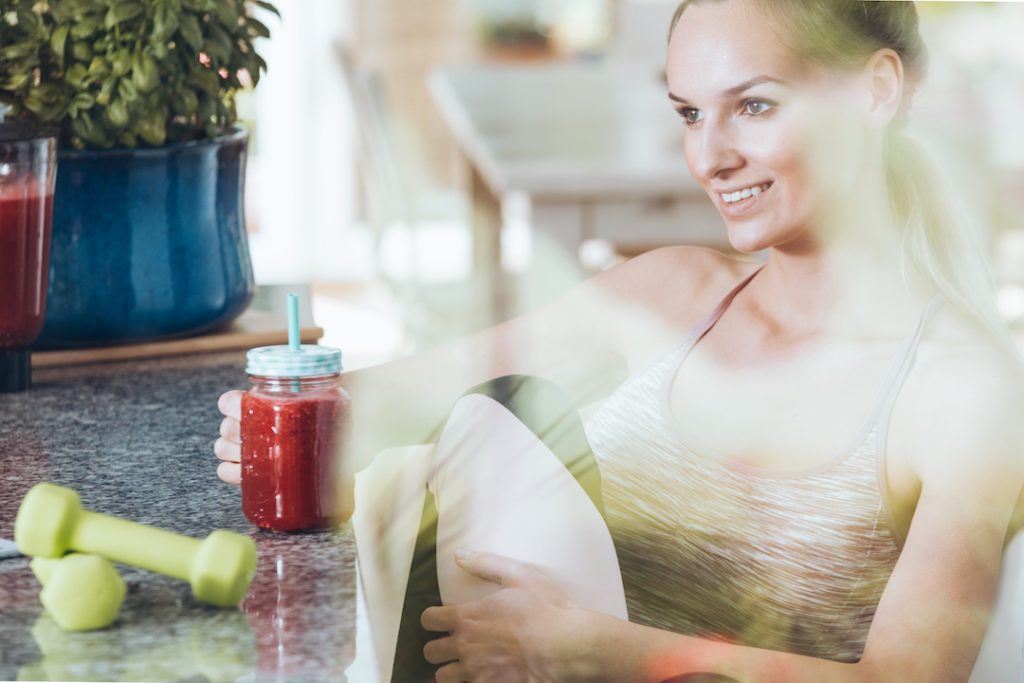7 Tips for Exactly How to Eat Before and After a Workout
February 8 2019Nutrition pros break down the guidelines for pre- and post-workout eating, so you can maximise the benefits of your sweat session.

When it comes to fuelling your workout, experts are in complete agreement—failing to do it properly before and after is a major mistake. “The right nutrition can be your secret strategy to being a better athlete,” explains Barbara Lewin, RDN, CSSD, a sports nutritionist based in South Florida who works with pro athletes, including Olympians, NBA players, and endurance athletes. “Consuming the right nutrients before your workout ensures your body has what it needs to work hard, and eating the right foods afterward aids recovery,” she says.
The catch is, there is no one-size-fits-all plan. The reason: Things like body weight and workout intensity play major factors. So you’re going to have to experiment. To put you on the right path, we asked nutrition experts for a few basic guidelines. Start here, and you’ll figure out what works for you in no time at all.
Before: Go ahead, have some carbs
All those no-carb diets? Not so great for working out. Carbs are the most efficient fuel source because they break down quickly into smaller sugars that can be used as energy. If you eat a lot of protein right before, your body will prioritise the exercise, which means blood flows away from the digestive system, slowing the process. It also may cause uncomfortable, or even painful, cramps. The other thing to be aware of is the best time to eat those carbs. Ideally, you want a small carb-focused meal (think 300-500 calories) two to three hours before you exercise, or a snack (100-200 calories) an hour before, advises sports nutritionist Roxanne Vogel, MS, CSCS. Some great options: a banana or oatmeal.
Just say no to fatty foods
Before you go for a run or head to the gym, limit the quantity or steer clear of anything high in fat. “Fat slows down digestion, which means it will slow down the conversion of food to usable energy,” says Lisa Hayim, RDN, founder of the Well Necessities in New York City, which offers healthy-eating coaching. “You can also experience GI cramping, which will disrupt your workout,” she adds.
Consider your exercise intensity
If you’re taking an intense class (like indoor cycling or a hard-core boot camp), you really don’t want much in your stomach at all. The goal should be to eat a light, easily digested meal two hours beforehand. Chowing down any closer to the start could cause things like heartburn and other stomach pain and discomfort.
After: Time it right
Within 30 minutes of wrapping up your workout, get some food in your belly. “That’s when the body will be able to use it most efficiently,” says Lewin. After most cardio-based workouts, Lewin’s recommendation is to opt for a 4:1 ratio of carbs to protein. Go for something like a smoothie or a low-fat chocolate milk.
Power up after you pump iron
“When you lift, you break down muscle fibers,” explains Hayim. “In order to repair and build those muscles back up, you have to feed them with protein. And you’ll still want some carbs to boost energy.” A protein shake or bar made with fruit are solid choices.
Don’t overdo it
Giving yourself free rein to house an entire pepperoni pizza just because you ran a few miles isn’t exactly the smartest choice. To put things in perspective, consider this: On average, a three-mile run burns about 300 calories. That’s also about how many calories are in a single slice of pizza. And with the pizza, you’re not getting as much protein and other nutrients as your body needs after that run. This is not to say you should never treat yourself, just be mindful of when and how often you do.
Drink up
As for fluids, we’ve got some pointers that will help you get exactly what you need in terms of hydration. About an hour before working out, drink 8 ounces of water to help ensure you’re starting off hydrated. If it’s really hot during your workout (or it’s high intensity), you should add a low-calorie electrolyte tablet to your water pre-workout and also drink during your workout, says Erika Villalobos-Morsink, RD. This will help you maintain adequate hydration and replace what you lose through sweat. And don’t forget to rehydrate post-workout. Aim for 6–8 ounces; more if you tend to sweat heavily.
Sourced from Health.com
